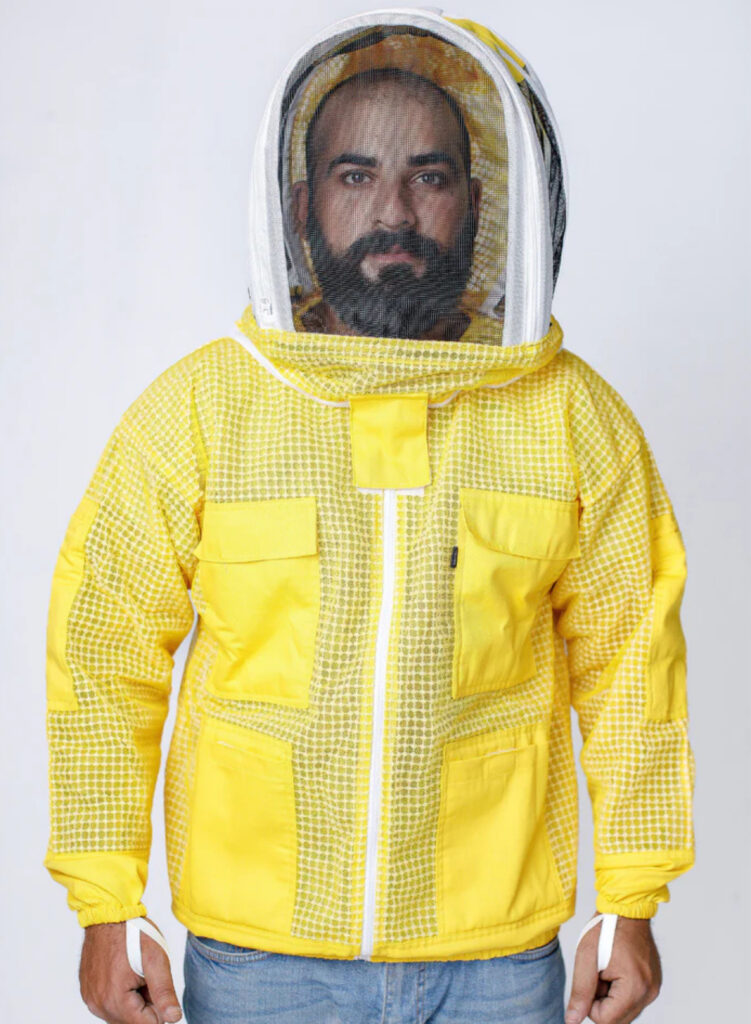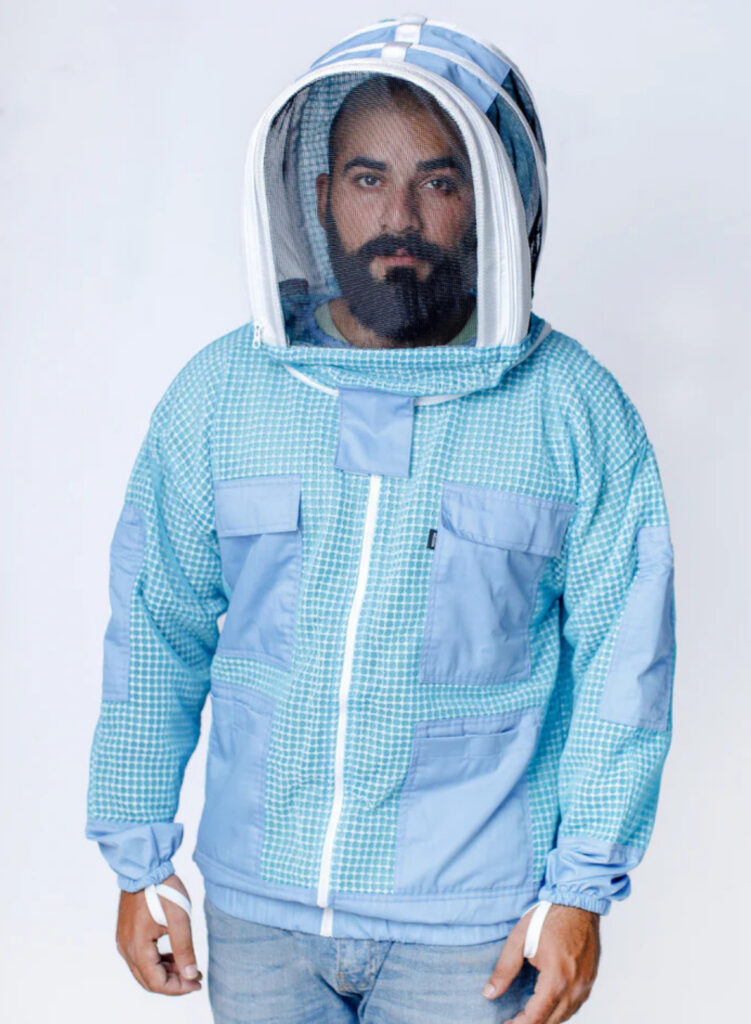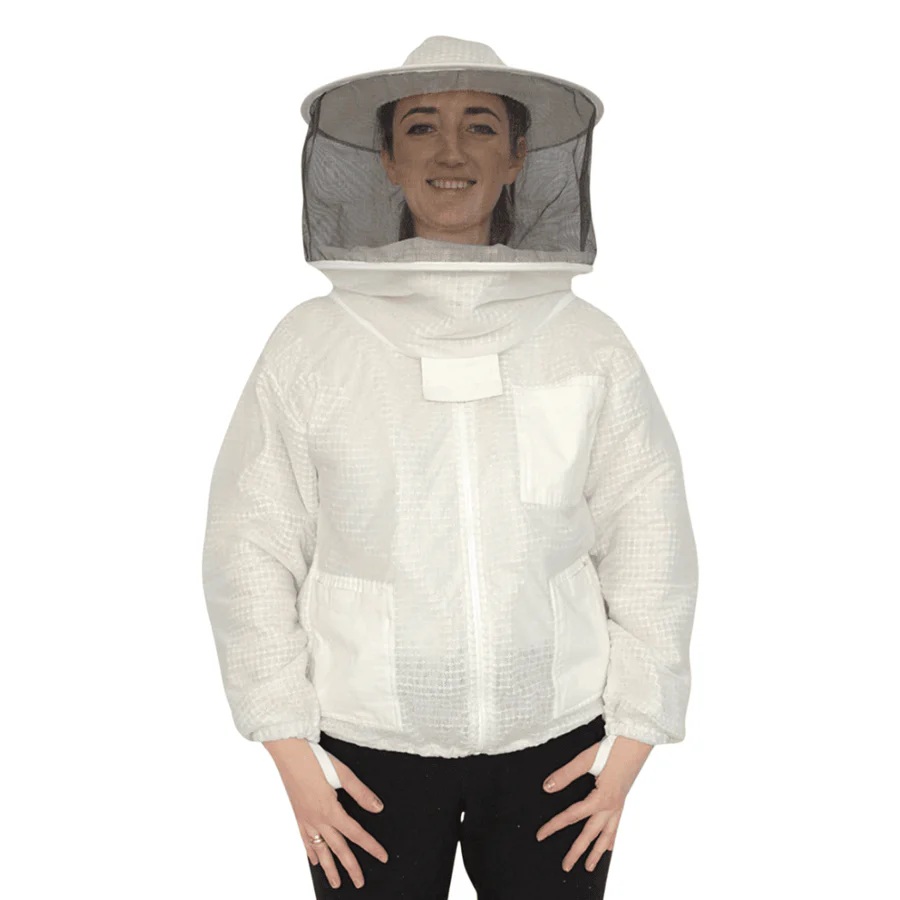Beekeeping is one of the oldest agricultural traditions in human history, dating back thousands of years. Today, it continues to grow in popularity—not only for honey production but also because of its importance in pollination and sustainability. However, no matter how skilled or experienced a beekeeper may be, one reality never changes: working with bees requires proper protection.
Among the essential protective gear, the beekeeping jacket has become one of the most practical and widely used options. It provides coverage for the upper body, arms, and head—areas most likely to get stung—while remaining lighter and more comfortable than a full bee suit. This makes it a favorite for beginners, hobbyists, and even seasoned apiarists who need freedom of movement and breathability.

Anyone who has spent time around bees knows that they are generally gentle creatures. Honeybees are not naturally aggressive; they are busy collecting nectar, pollinating flowers, and caring for their hive. But when their home is opened or disturbed, their instincts kick in, and they can quickly become defensive.
A single sting on the hand or face might be manageable for some, but repeated stings can cause:
Pain and swelling – Sensitive areas like the face, ears, or neck are particularly painful.
Allergic reactions – Some individuals can develop severe allergic responses to bee venom.
Loss of focus – Fear or pain from stings can distract beekeepers, leading to mistakes.
Stress on the colony – A beekeeper rushing due to discomfort may agitate the bees further.
This is why a beekeeping jacket is so essential. It shields critical areas while allowing the beekeeper to work calmly and confidently.


Confidence in the Apiary – When protected, beekeepers can take their time inspecting brood frames, checking for pests, and harvesting honey.
Protection Without Bulk – Jackets provide targeted coverage, keeping you safe without making you feel overheated.
Ideal for Beginners – New beekeepers often feel nervous; a jacket provides reassurance and safety.
Versatility – Suitable for quick hive checks, teaching children, or even large-scale operations.

One of the most common questions beginners ask is: “Should I get a full bee suit or just a jacket?” The answer depends on your comfort level, the type of beekeeping you do, and your climate.
1. Coverage
Full Bee Suit – Offers complete head-to-toe protection, covering legs, torso, arms, and head. Best for aggressive hives or commercial operations where exposure is high.
Jacket – Protects the upper body, arms, and head, while regular pants cover the legs. Works best for calm colonies or hobbyists.
2. Comfort & Weight
Full Suit – Can feel heavy, restrictive, and hot, especially during summer inspections.
Jacket – Lightweight and breathable, designed to be worn quickly and comfortably.
3. Mobility
Full Suit – Restrictive when bending, kneeling, or lifting hive boxes.
Jacket – Allows greater freedom of movement, perfect for quick checks or warm climates.
4. Best Use Cases
Full Suit – Ideal for large commercial beekeepers, swarm collection, or aggressive colonies.
Jacket – Preferred by backyard beekeepers, urban gardeners, and beginners who need simple, reliable protection.

Imagine a professional beekeeper in Florida managing 100 hives under the summer sun. A ventilated beekeeping jacket allows them to inspect colonies without overheating. In contrast, someone collecting swarms or handling highly defensive bees in colder regions might feel safer in a full suit.

When searching for a beekeeping jacket for sale, knowing what to look for ensures your investment lasts and keeps you protected.
Durable Fabrics – Cotton canvas, poly-cotton blends, or multi-layered mesh that resist stings.
Attached Veil – Choose between fencing-style for a snug fit or round veils for wider visibility.
Elastic Cuffs and Waistbands – Prevent bees from sneaking inside.
Heavy-Duty Zippers – Long-lasting, easy-to-use zippers with protective flaps.
Utility Pockets – Essential for carrying hive tools, bee brushes, or notes.
Ventilation Panels – Perfect for hot weather, keeping you cool while protected.


Even though full suits provide more coverage, jackets strike a perfect balance. They’re lighter, easier to wear, and practical for everyday use.
Backyard Beekeepers love them for their convenience.
Professional Apiarists use them for short inspections when full suits are unnecessary.
Children and Teens learning beekeeping feel less restricted in jackets.
For many, jackets are the ideal middle ground between comfort and safety.

A beekeeping jacket is not just another item in your toolkit—it’s your first line of defense in the apiary. While a full bee suit may be essential in certain circumstances, jackets are often the go-to choice for their comfort, breathability, and ease of use.
Whether you’re harvesting honey, inspecting frames, or teaching a child about bees, the right jacket allows you to work with confidence, safety, and peace of mind.
Trusted brands like Bebees design beekeeping jackets with durability, ventilation, and beekeeper-tested features, ensuring you stay protected season after season. If you’re starting your beekeeping journey or upgrading your protective gear, investing in a high-quality jacket is one of the smartest decisions you’ll make.
Recommended1 recommendationPublished in Uncategorized







